Marlon Brando’s 10 best films
Forty years after the seminal ‘Apocalypse Now’, Graeme Ross ranks the top 10 career-defining performances from one of modern cinema’s biggest influences
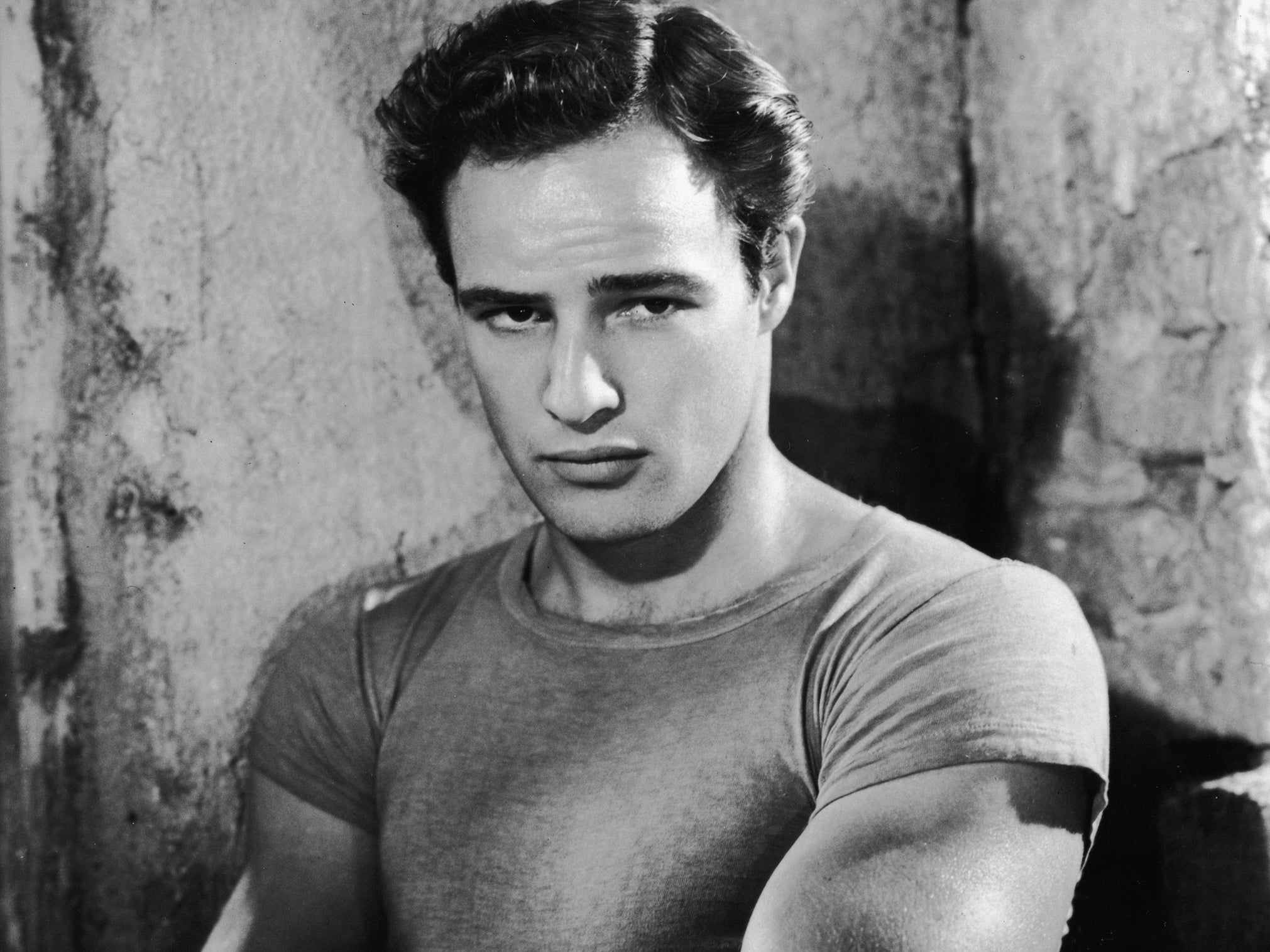
Forty years ago on 19 December 1979, Francis Ford Coppola’s epic Vietnam War masterpiece Apocalypse Now premiered in the UK. It was one of the most eagerly anticipated films of the decade – The Godfather director’s vision of the hell that was America’s involvement in the Vietnam War, based on Joseph Conrad’s novel Heart of Darkness.
Much of the buzz around Apocalypse Now was down to the involvement of the legendary Marlon Brando in a small yet pivotal role as renegade Green Beret Colonel Kurtz. In the seven years since working with Coppola, as Don Corleone in The Godfather in 1972, he had made just three films but the mere fact Brando was back in a significant film (and reunited with Coppola) was an event in itself. Brando, after all, was the great actor of his time who – after exploding onto the screen in the early 1950s – redefined the art of film acting by breaking all the rules of what had come before. He was the iconoclast who became an icon, the first rebel of post-war cinema and yet, ultimately, Brando’s rebellious nature – which had informed so many of his roles – and his disillusionment with the movie business, left him with a distaste for acting and Hollywood.
Much has been said on the assertion that he squandered talent in lieu of an easy pay-cheque, and it is true his legend rests with a surprisingly narrow list of films. However, as Martin Scorsese has said, “there is before Brando and after Brando” and accordingly, he left behind a handful of the greatest film performances ever seen and influenced generations of actors. Here is a look back at Brando’s 10 career-defining performances.
10. A Streetcar Named Desire, directed by Elia Kazan, 1951
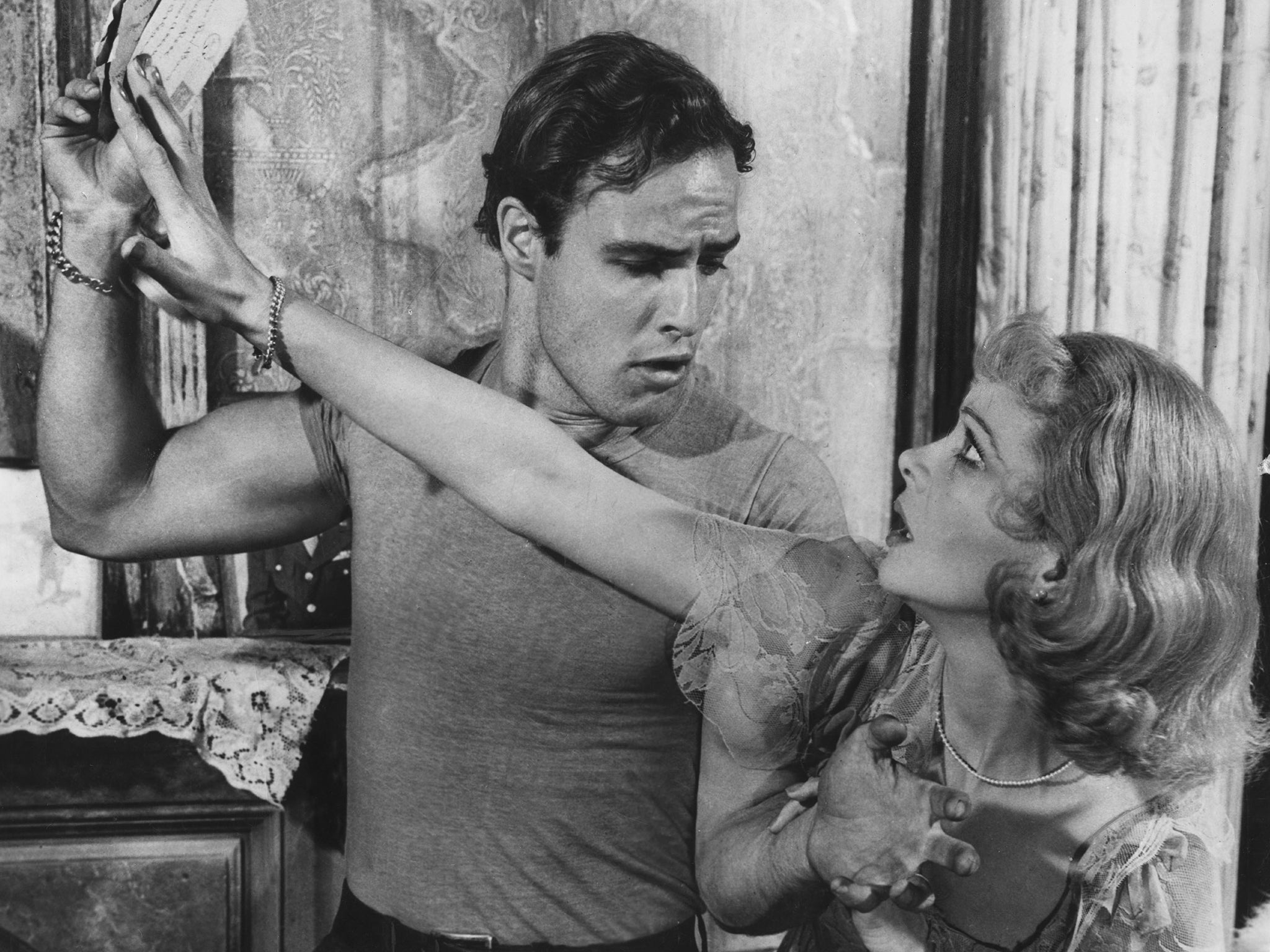
In 1947, aged just 23, Brando was really too young when he took the role of the animalistic Stanley Kowalski in the original Broadway run of Tennessee Williams’ play, however, his searing performance caused a sensation and Hollywood soon came calling. He made an immediate impression in his debut role as a paraplegic war veteran in Fred Zinnemann’s worthy The Men (1950) and when casting began for the screen version of Streetcar – with Elia Kazan, who directed him in the stage version, on board as director – Brando was the obvious choice for a part coveted by many of the Hollywood young breed of male actors.
Brando’s journey to cultural icon begins here with a performance that brought new standards of realism to film, as he brings his Method-acting chops (gleaned under the famed Stella Adler) to the big screen. Brando’s intense yet melancholic performance humanised Kowalski – who can forget the street scene where he stands pleading for his wife to come to him, yelling “Hey Stella!” until, unable to resist, she gives in? And just as Clark Gable had made the men’s singlet redundant in the 1930s, after revealing he didn’t wear one in It Happened One Night, Brando too influenced male fashion – making the T-shirt, even when torn and sweat-stained, an essential fashion item. All the main actors in Streetcar – Vivien Leigh, Karl Malden, Kim Hunter, won Oscars apart from Brando, who missed out to Humphrey Bogart, the sentimental choice for The African Queen.
9. Julius Caesar, Joseph L Mankiewicz, 1953
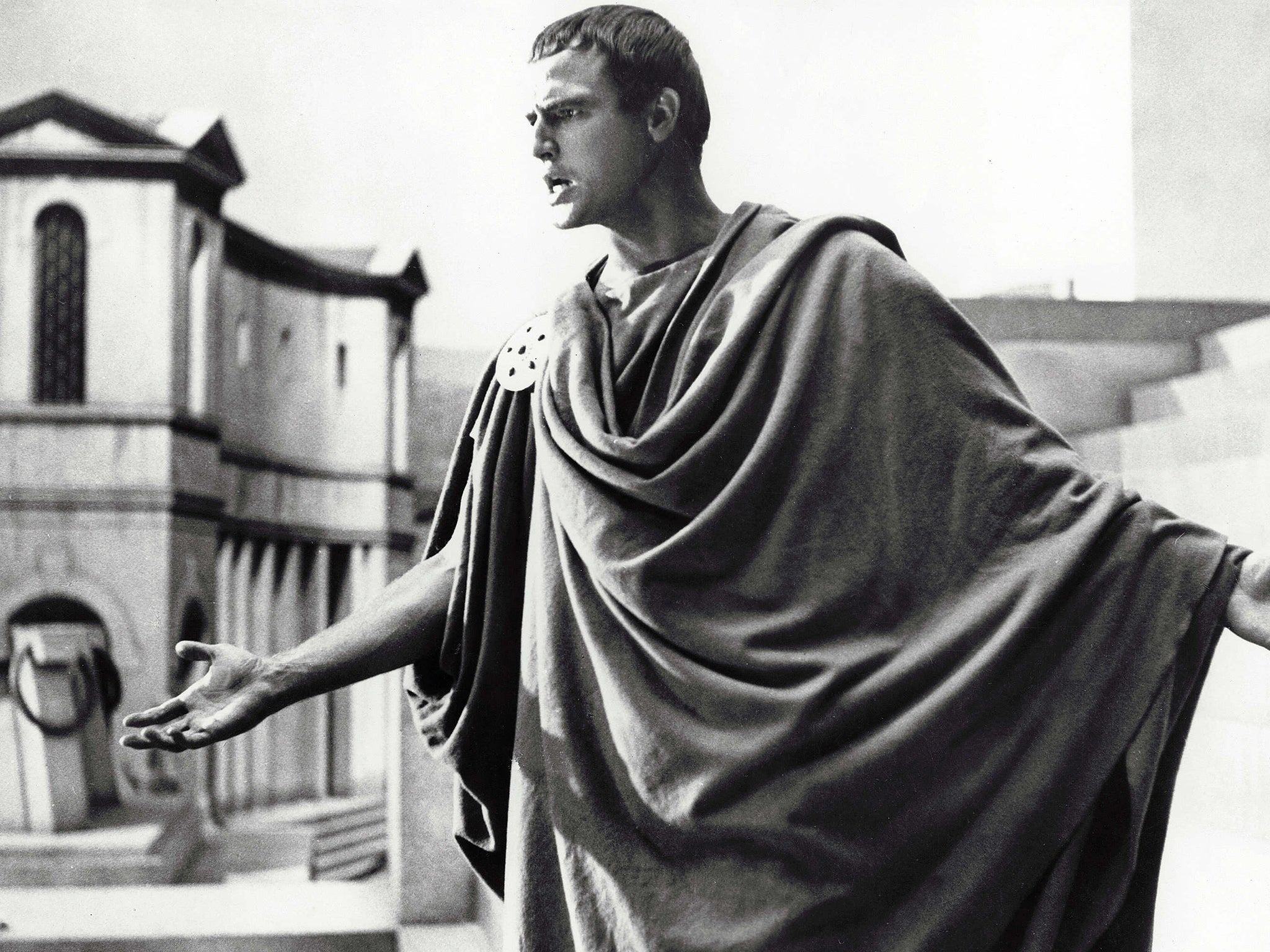
After another best-actor Oscar nod for Viva Zapata! the previous year, Brando was something of a surprise choice for the role of Mark Anthony in this prestigious screen version of Shakespeare’s play. The feeling was that he could play Mexican revolutionaries and brutish tenement dwellers, but could he pass muster as the bard’s noble Roman? In among such heavyweight acting talent as John Gielgud as Cassius and James Mason as Brutus, Brando succinctly proved that he could – his diction and poise far removed from the inarticulate, mumbling rage of Kowalski. His third best-actor nomination followed but he again lost out, this time to William Holden for Stalag 17.
8. The Wild One, Laszlo Benedek, 1953
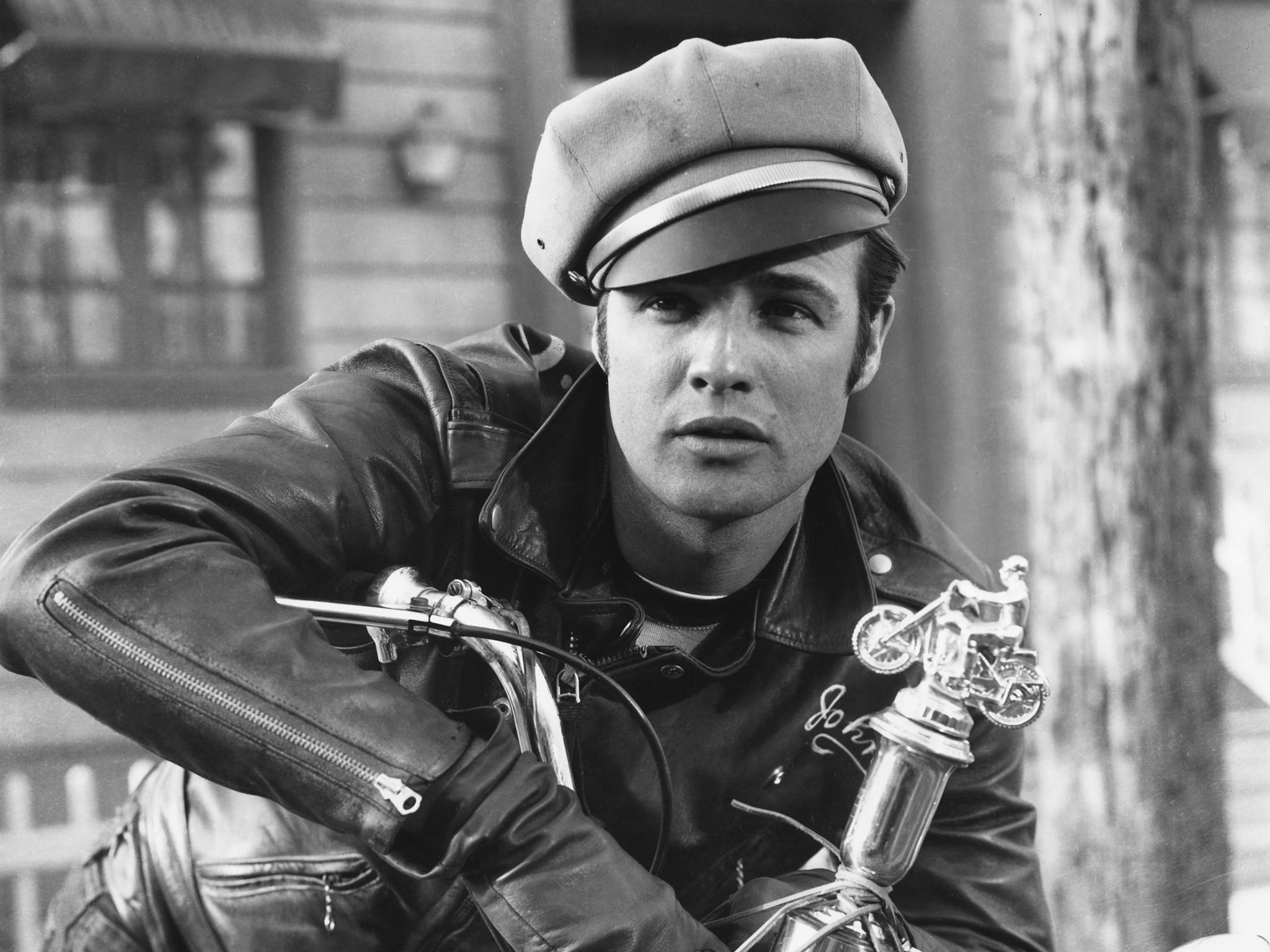
Brando cemented his fashion-icon status, popularising denims, leather jackets and sideburns – as Johnny Strabler, leader of a motorcycle gang who terrorises a small Californian town – in the original biker film. The Wild One generated much negative publicity and was banned in the UK for 14 years; when it finally made UK cinemas in 1968, it was given an X certificate. Viewing the film now, you would wonder what all the fuss was about but, in 1953, with its violent depiction of a disaffected post-war generation, this was hot stuff and way ahead of its time. Brando tapped into his own rebellious personality for the role and the motorcycle he used in the film was actually his own Triumph Thunderbird 6T. His performance including his famous line, “Whadya Got?” in reply to being asked what he was rebelling against, helped confirm his status as the epitome of cool.
7. On the Waterfront, Elia Kazan, 1954

Director Kazan had been a “friendly witness” in 1952, naming names to the House of Un-American Activities Committee during the Communist witch-hunts, and On the Waterfront was seen as his vindication. It won eight Oscars and Brando sealed his status as the great actor of his time with what is still one of the greatest onscreen performances – as Terry Malloy the broken-down boxer and New York dockworker who, searching for redemption, testifies against corrupt union bosses. The scene with Brando and Rod Steiger in the back of the taxi, largely improvised by the actors, is renowned in cinema history and has been copied and parodied ad infinitum.
As befits the Method, Brando researched his part by meeting New York dockworkers and prizefighters and he raised the acting bar even higher than he had before, at last winning the best actor Oscar. On the Waterfront remains an American classic and it marks the end of one of cinema’s great actor/director collaborations which only lasted a mere three films. Brando had created a legend – and a new form of acting – and, although his success would continue throughout the 1950s, up to and including his role as a German officer in 1958’s The Young Lions, some critics have commented that Brando was never quite the same actor after On the Waterfront.
6. One-Eyed Jacks, Marlon Brando, 1961
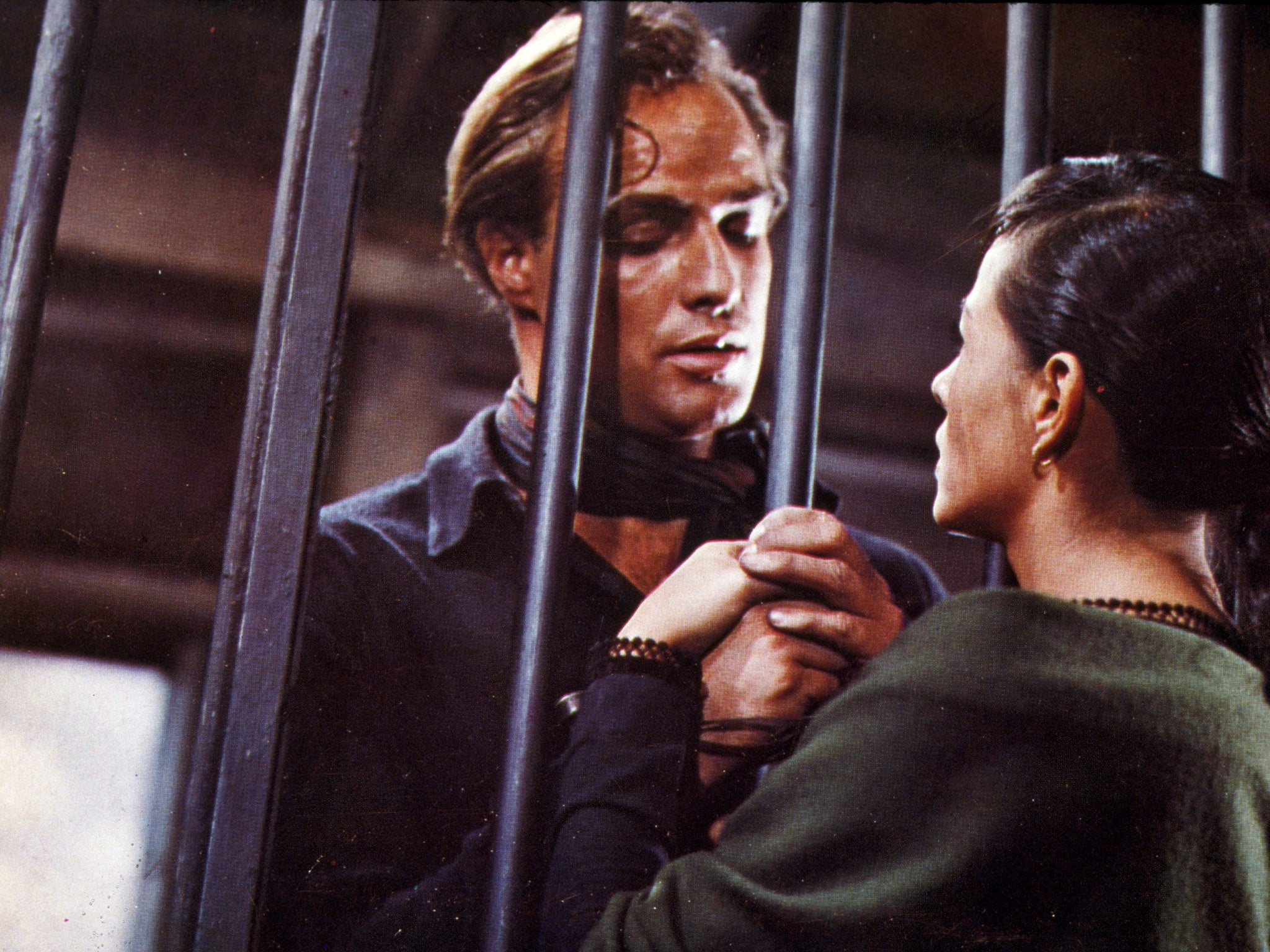
Brando fell out with original director Stanley Kubrick so the star was left to helm the only film he ever directed, a take on the Billy the Kid legend. The story goes that Kubrick, struggling to get a handle on the storyline, asked Brando, “What’s it about?” and Brando replied, “It’s about the $350,000 I’ve spent so far”, which gives an inkling into Brando’s cavalier and dismissive attitude towards the business of making movies. One-Eyed Jacks thus became famous for Brando’s excesses, as he shot an unheard-of one-million-feet of film and the shoot ran months over schedule.
Brando’s original cut had a running time of almost five hours, however he soon grew tired of the editing process and Paramount Studios took over. Brando the actor gave one of his most charismatic performances, full of long, brooding silences, and explosive bursts of rage. One-eyed Jacks remains a fascinating, flawed masterpiece and, thanks to its stunning Monterey and Big Sur locations, one of the most aesthetically beautiful Westerns ever made. The viewer is left wondering how good a director Brando could have become if he had been more disciplined and less inclined to boredom.
5. The Godfather, Francis Ford Coppola, 1972

Brando followed One-Eyed Jacks with a mannered, self-indulgent performance as Fletcher Christian in 1962’s elephantine Mutiny on the Bounty. It was at this point in his career that his antipathy to filmmaking began to kick in and his outrageous demands and behaviour on set began to escalate, resulting in costly delays. Mutiny on the Bounty was a box-office disaster and Brando shouldered most of the blame. The one true legacy of the film however, was that it sparked his love affair with Tahiti – where much of the filming took place – and which would last for the rest of his life. After this fiasco, however, and some drastic career moves in the 1960s, Brando’s career was on the rack and, as the 1970s dawned, he was considered virtually unemployable.
In fact, Brando’s stock in Hollywood had fallen so low that he was forced to do a screen test for the role of ageing Mafia Don Vito Corleone in the film version of Mario Puzo’s novel, The Godfather. The rest is history as Brando re-emerged from the wilderness with a stunning performance in the quintessential gangster saga, which won him his second best-actor Oscar. However what followed was a typically grandiose yet seemingly self-destructive Brando gesture when he sent Native-American actor and activist Sacheen Littlefeather to refuse the award on his behalf as a protest against the treatment of Native Americans in the film industry. Hollywood never really forgave Brando for that, but by this stage in his life he cared little for how he looked or how he was perceived by an industry he had grown to hate.
4. Last Tango in Paris, Bernardo Bertolucci, 1972
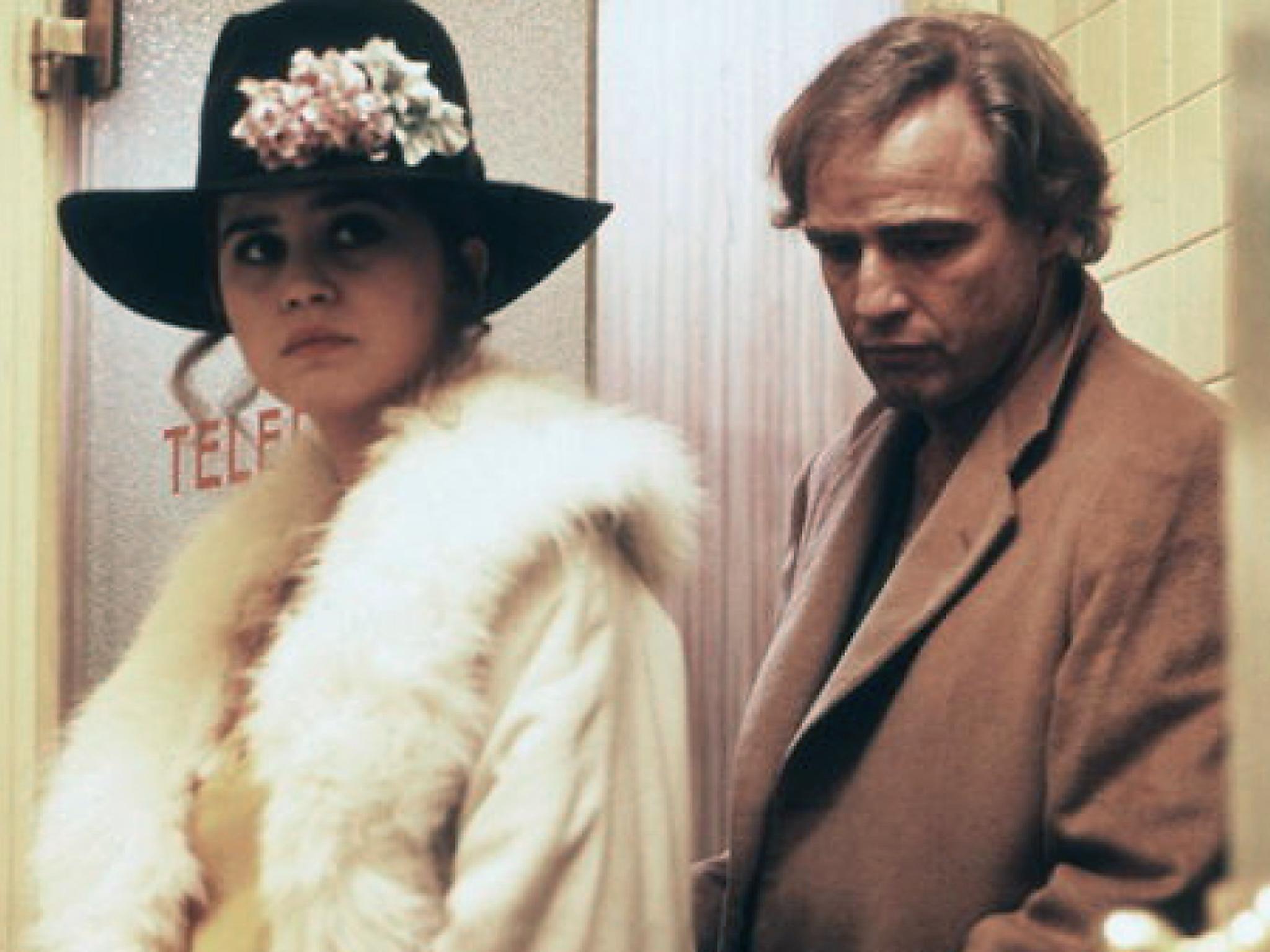
Brando completed a remarkable artistic comeback with his next film, a highly controversial, sexually graphic art-house project in which he played Paul, a middle-aged widower adrift in Paris – after the tragic suicide of his wife, who embarks on a destructive relationship with a young woman. This was Brando really turning the clock back to the intensity of his early movie roles, searching deep into his psyche to give a performance full of pain, anger and self-loathing. The hugely powerful and emotional scene where Paul confronts his wife’s body, in an outpouring of grief and recrimination, is perhaps the greatest example of Brando’s genius as an actor. But Brando vowed never again to destroy himself emotionally to make a movie. And he never did.
3. Apocalypse Now, Francis Ford Coppola, 1979
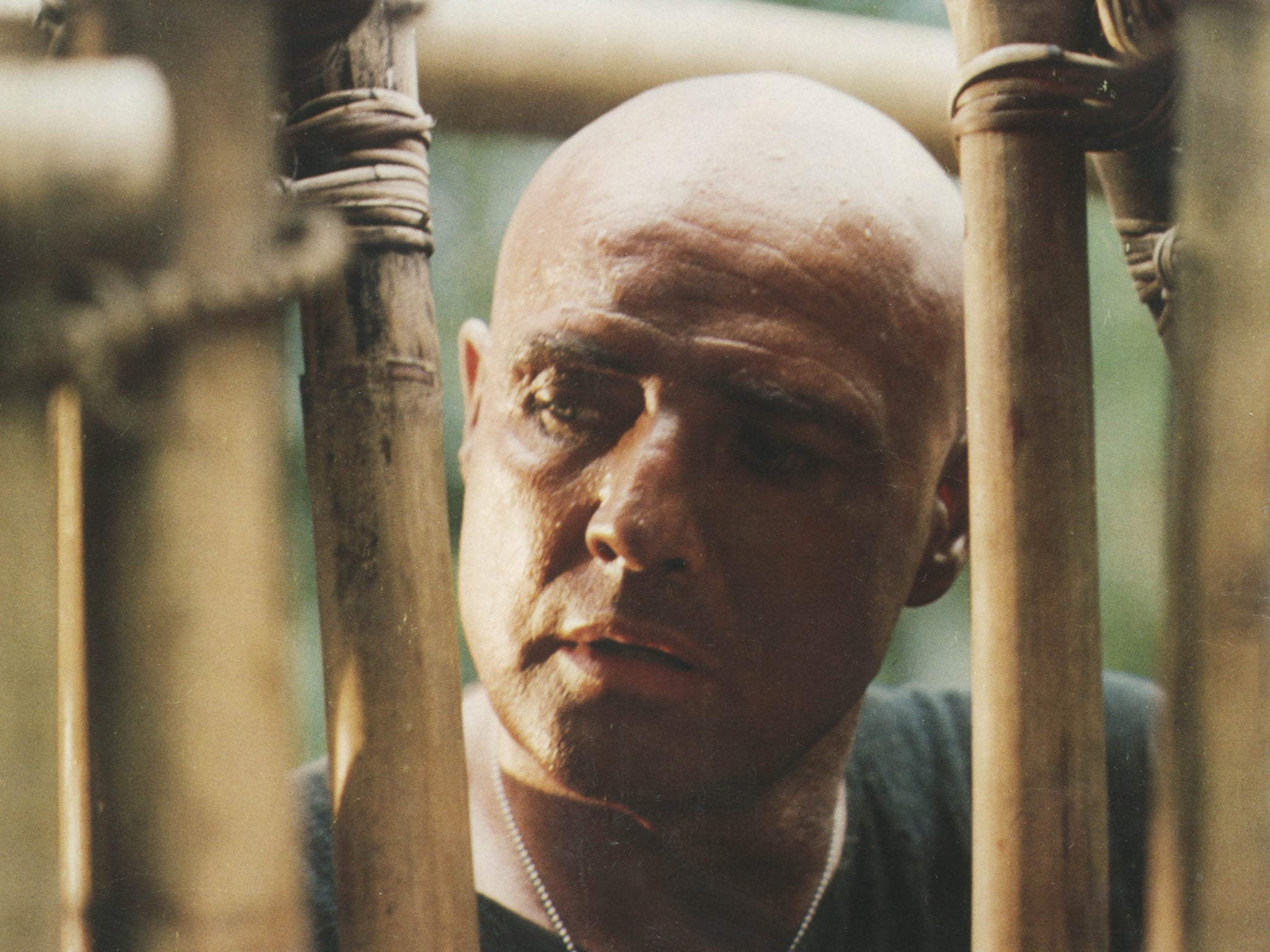
As the decade progressed, Brando’s distaste for Hollywood and the movie business grew as he increasingly began to view acting as a rather pointless and demeaning way to make a living. But that didn’t stop him making outrageous salary demands and in most cases getting them. For two weeks’ work and 10 minutes screen-time in 1978’s Superman, Brando was paid $4m and, when he agreed to a reunion with Godfather director Coppola – to play Apocalypse Now’s Colonel Kurtz, the former model-soldier turned self-proclaimed God in the jungles of Cambodia – his salary was $1m per-week. The filming of Coppola’s Vietnam War masterpiece has entered movie folklore, particularly Brando’s own involvement in it. He turned up for filming bald and grossly overweight, unable – or unwilling – to learn his lines or even read them from his now accustomed cue cards.
So he more or less made his own up, while reading TS Eliot and Conrad, just one example of a chaotic shoot. For much of the film, Kurtz is an unseen, almost mythical – but much spoken-of – presence yet the actor’s mere existence adds immeasurably to the film. Even with much of Brando’s scenes filmed in shadows, there was still something magical and unforgettable about his performance. It’s impossible to imagine Apocalypse Now without him.
2. The Freshman, Andrew Bergman, 1990
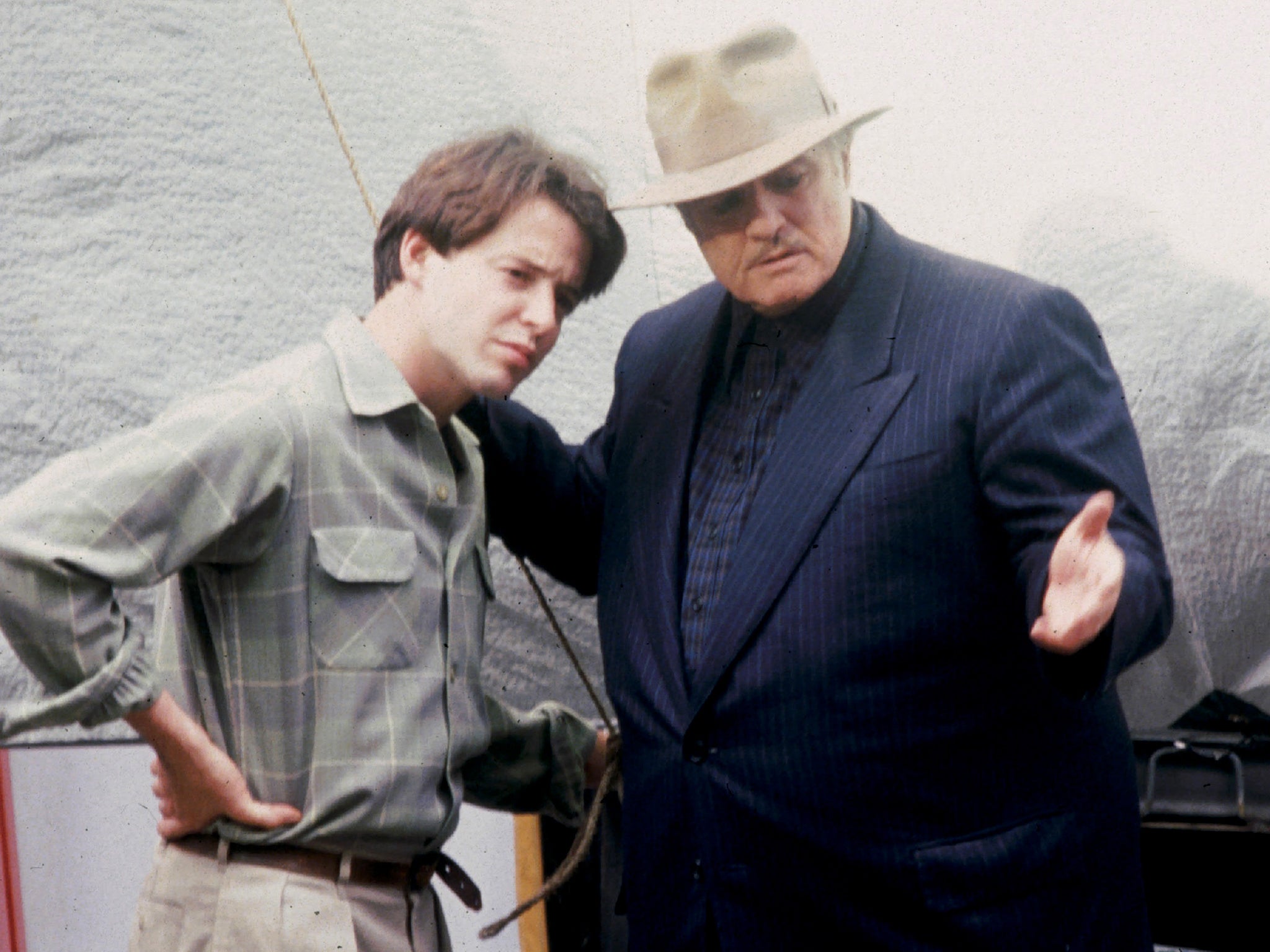
Brando had announced his retirement from acting in 1980 but would continue to make movies, most of them dispiriting affairs notable only for the vast sums he received for appearing in them. He had long since given up trying to memorise his lines and would read from cue cards plastered all over the film sets. However, there were sporadic glimpses of the old magic such as in 1989’s anti-apartheid themed A Dry White Season, which gave him the last of his eight Oscar-nominations, and this sparkling comedy in which he deliciously sent up his Don Corleone performance in The Godfather. Brando wasn’t always comfortable with comedy, but he’s very funny here and there’s great screen chemistry between Brando and his young co-star Matthew Broderick. And you can add the scene of a wonderfully graceful Brando on ice skates to his list of memorable screen images.
1. The Score, Frank Oz, 2001
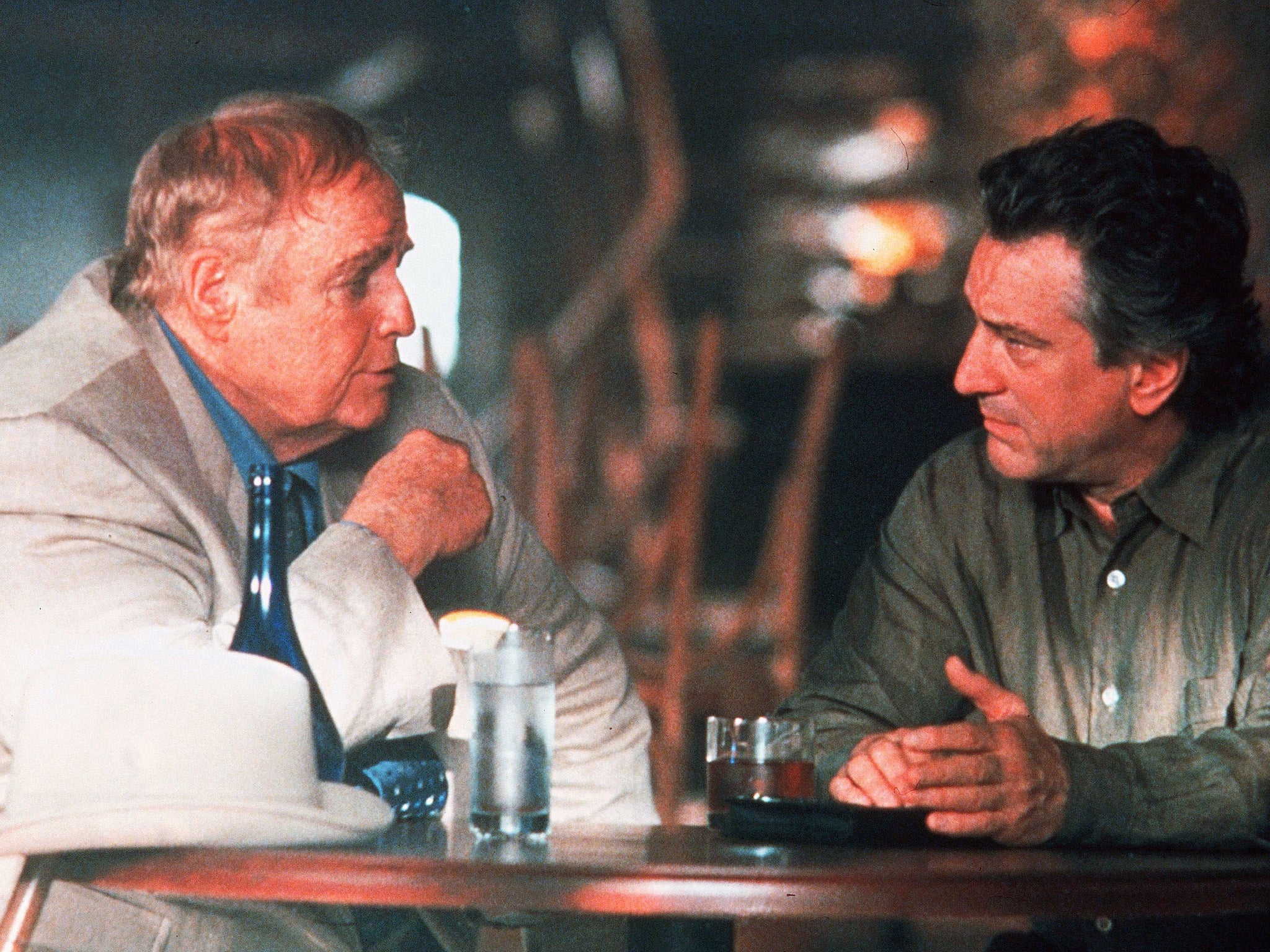
Brando’s last screen appearance was noteworthy as the only time he and Robert De Niro, at one time a leading contender for the title of “the new Brando”, appeared together on screen. The two Don Corleones’ scenes together are enough reason to watch the film and as a bonus they are joined by a third-generation of great acting talent in Edward Norton, while The Score works as a solid heist thriller. It was certainly a much better movie than anything he had made since The Freshman and Brando deserved the plaudits he received for a valedictory performance as Max, the mover and shaker behind master-criminal De Niro’s final big job. By all accounts, Brando’s on-set behaviour was as difficult as ever, but that was Brando, a rebel to the end.
Join our commenting forum
Join thought-provoking conversations, follow other Independent readers and see their replies
Comments